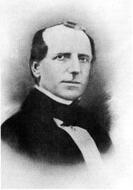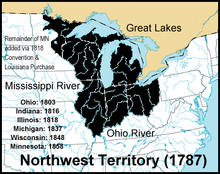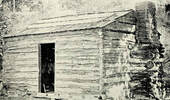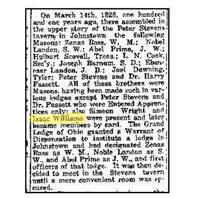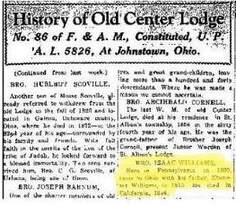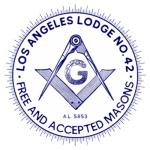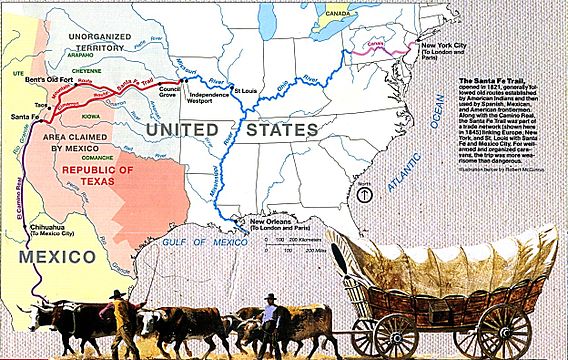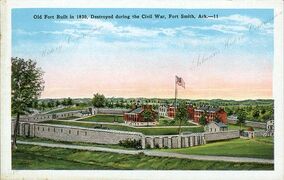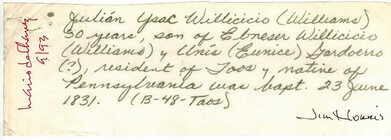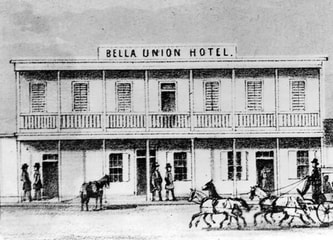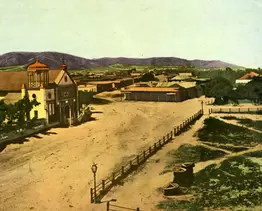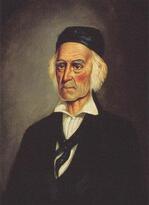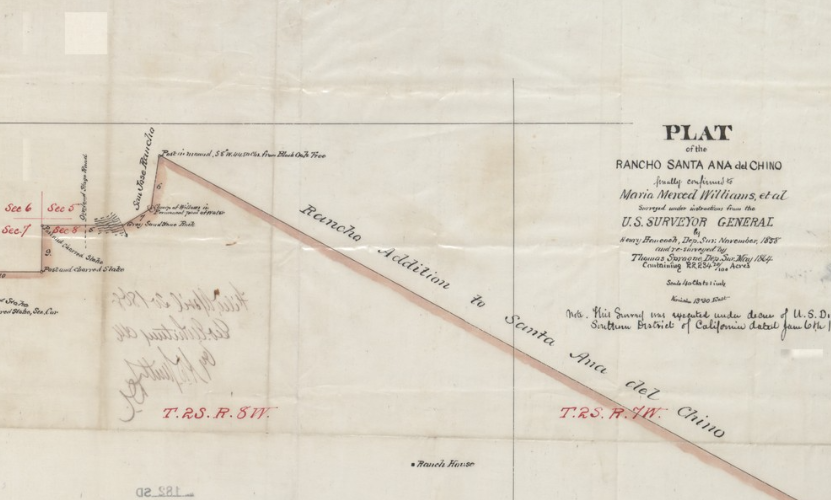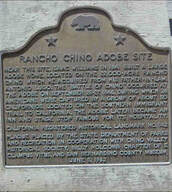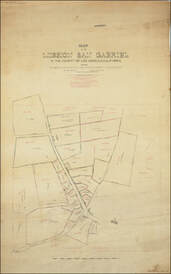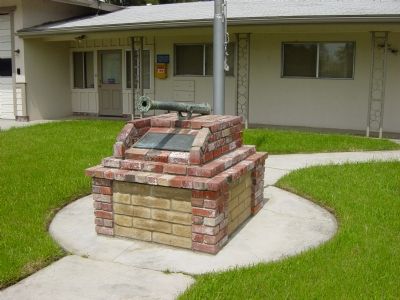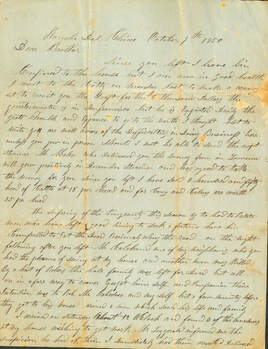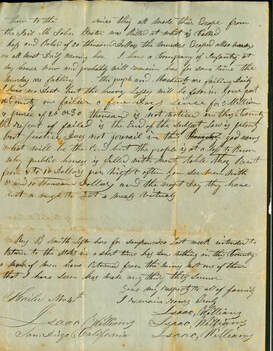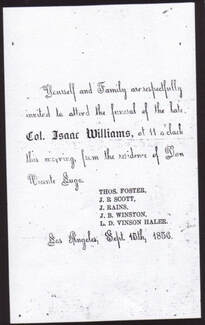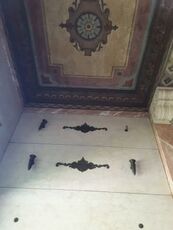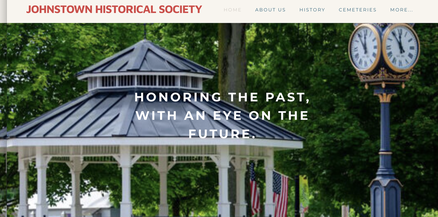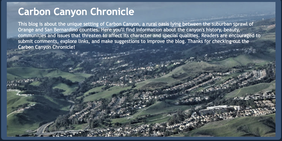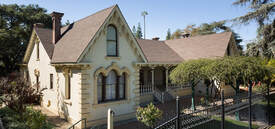Who is Isaac Williams?
Although Isaac Williams is quite well-known in western United States' history and, in particular, the San Bernardino, California region, very little is known about his formative years of growing into manhood in the wilds of the Ohio territory.
From a young lad of age eleven in 1810 to attaining the age of 27 by 1826, Isaac had spent 16 years of his life in the ever growing pioneer community of Johnstown, located in Monroe Township of Licking County, Ohio.
Isaac Williams was born on September 19, 1799 in Wyoming Valley, Exeter, Luzerne County, Pennsylvania to parents Ebenezer and Eunice (Gardner) Williams. Both of Isaac's grandfathers (Thaddeus Williams and Peregrine Gardner) were veterans of the American Revolution. Many of his relatives were also casualties of the horrific Wyoming Massacre of Pennsylvania that took place on July 3, 1778.
From a young lad of age eleven in 1810 to attaining the age of 27 by 1826, Isaac had spent 16 years of his life in the ever growing pioneer community of Johnstown, located in Monroe Township of Licking County, Ohio.
Isaac Williams was born on September 19, 1799 in Wyoming Valley, Exeter, Luzerne County, Pennsylvania to parents Ebenezer and Eunice (Gardner) Williams. Both of Isaac's grandfathers (Thaddeus Williams and Peregrine Gardner) were veterans of the American Revolution. Many of his relatives were also casualties of the horrific Wyoming Massacre of Pennsylvania that took place on July 3, 1778.
|
Tax records and census records show that Isaac's family was living in Exeter, Luzerne County, Pennsylvania as early as 1796 through 1810. The 1800 U.S. census that was taken at Exeter, Luzerne County, PA on March 7 lists Ebenezer (age 31) with a family of eight. The August 6, 1810 U. S. Census lists Ebenezer Williams (age 41) as still residing in Exeter, Luzerne County, Pennsylvania and his family had increased to 14 people. However, when the 1830 U. S. census was taken, Ebenezer Williams and his family of nine were now listed in Johnstown, Monroe Township, Licking County, Ohio. This was probably the last census that Isaac was listed as a member of his parents' family.
|
|
Isaac and his family in Ohio
During the fall of 1810 when Isaac was 11 years of age, his family moved further west of Pennsylvania to a new home in the Ohio wilderness. It is assumed that they followed the typical migration patterns in what was then the "Old Northwest" (created in 1787) of the United States in which immigrants moved from Pennsylvania into Ohio, usually with a covered wagon in tow. Census records reflect the names of many families from the Wyoming Valley region of Pennsylvania moving west to this same new land. |
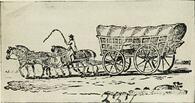
Ebenezer and Eunice (Gardner) Williams were hardy pioneers that gave them the resources to overcome difficulties and hardships on their journey to this quite dense forest that would be their new homeland. There were no established roadways and so the Williams family most likely followed long-established American Indian trails. These early pioneers literally hewed their way through the forest. Upon selecting the place to be their home the first work was to cut a clearing. And, of course, pioneer life was continually in danger of wild animals such as wolves, bears and some remaining bison.
When the Williams' family arrived to their new home in 1810, there was a small band of Wyandot Indians nearby in a village called Raccoontown that was along Raccoon Creek. However, history records that most of these Native Americans had left the area not long after the Treaty of Greenville was signed.
Isaac's parents, Ebenezer and Eunice (Gardner) Williams, most likely bought their 200 acres from a Revolutionary War soldier who wanted to begin selling off his military service reward of up to 4,000 acres. Ebenezer’s land was described as being one mile northwest of current day Johnstown and lying on Raccoon Creek.
Johnstown lies in a section of Ohio originally designated as the U.S. Military Tract. This land tract was established by the United States Congress to compensate veterans of the American Revolutionary War for their service.
The land on which Johnstown sits was originally deeded to John Alston Brown by President John Adams on April 2, 1808. On December 7, 1810, John Alston Brown, a veteran from New Jersey but then living in Boone County, Kentucky, deeded his four thousand acre tract of land to Dr. Oliver Bigelow (1759-1817) for $10,000 or $2.50 per acre. Dr. Bigelow was originally from New York, but had also lived in Pennsylvania in the same vicinity as the Williams' family. It is most likely that Bigelow encouraged Ebenezer Williams to consider moving to the Licking County area.
When the Williams' family arrived to their new home in 1810, there was a small band of Wyandot Indians nearby in a village called Raccoontown that was along Raccoon Creek. However, history records that most of these Native Americans had left the area not long after the Treaty of Greenville was signed.
Isaac's parents, Ebenezer and Eunice (Gardner) Williams, most likely bought their 200 acres from a Revolutionary War soldier who wanted to begin selling off his military service reward of up to 4,000 acres. Ebenezer’s land was described as being one mile northwest of current day Johnstown and lying on Raccoon Creek.
Johnstown lies in a section of Ohio originally designated as the U.S. Military Tract. This land tract was established by the United States Congress to compensate veterans of the American Revolutionary War for their service.
The land on which Johnstown sits was originally deeded to John Alston Brown by President John Adams on April 2, 1808. On December 7, 1810, John Alston Brown, a veteran from New Jersey but then living in Boone County, Kentucky, deeded his four thousand acre tract of land to Dr. Oliver Bigelow (1759-1817) for $10,000 or $2.50 per acre. Dr. Bigelow was originally from New York, but had also lived in Pennsylvania in the same vicinity as the Williams' family. It is most likely that Bigelow encouraged Ebenezer Williams to consider moving to the Licking County area.
|
Bigelow laid out and incorporated his village in 1813 and named it Johnstown. He generously donated part of his 4,000 acre tract for streets, the town square and a "proper resting place" for citizens that is today called Bigelow Cemetery. However, Dr. Oliver didn't get to enjoy the fruits of his labor since he died in 1817. He does reside at a "proper resting place" in Bigelow Cemetery.
|
At the time of their travel to the west Ebenezer and Eunice (Gardner) Williams already had 8 children. This included their 20 year-old daughter named Lydia, 16 year-old David, 11 year-old Isaac and 7 year old-twins Thaddeus and Irene. Their three youngest were Ruhama who was age 5 and Ebenezer, age 4, and the youngest Hiram who was 2 years old. The family grew to an additional 5 more children once they settled in Ohio. The parents were age 41 and 38 when they decided to settle in central Ohio.
More children were added to the Williams' family after settling in Monroe Township. Isaac's youngest siblings were Giles, born in 1812, Jonathan in 1813, Samantha was born in 1815, John in 1818 and Deborah was born in 1829.
Licking County marriage records show that on November 6, 1823 a 24 year-old Isaac Williams married Sally Wright. More research will need to be done to confirm that this is the same Isaac Williams of this story. If that is the case, it is assumed that Sally died by 1826 because that is around the time that Isaac left the Johnstown area to head further west.
Licking County marriage records show that on November 6, 1823 a 24 year-old Isaac Williams married Sally Wright. More research will need to be done to confirm that this is the same Isaac Williams of this story. If that is the case, it is assumed that Sally died by 1826 because that is around the time that Isaac left the Johnstown area to head further west.
Isaac Williams valued his membership as a Mason
|
On March 14, 1826 Isaac became a Masonic Lodge member in Johnstown, Licking County, Ohio. Although he was present for this March meeting, he later became a member by card (meaning not in person). Another article from the local Johnstown Independent newspaper provided brief bios of the original members of Johnstown's earliest Masonic organization. It states the following:
BRO. ISAAC WILLIAMS Born in Pennsylvania in 1800, came to Ohio with his father, Ebenezer Williams, in 1810. He died in California, 1856. |
|
Isaac's early membership as a Johnstown, Ohio Mason in 1826 must have always been an important aspect of is life. One of his last requests at Rancho Chino was to be interred with Masonic honors. Thus, on September 15, 1856 the Los Angeles Lodge No. 42 of F. & A. Masons convened a special meeting to offer their condolences for their Masonic brother, Isaac Williams.
|
|
Isaac Goes West
At age 27, Isaac got the "Go West, young man" bug and made a decision to leave his family and try his luck further west. He most likely left his home and traveled south to the Ohio River and onto the MIssouri River to Franklin in Howard County, Missouri. Franklin was often considered as the starting point for the Santa Fe Trail. Isaac probably followed this trail to New Mexico because documentation shows that he received a license to trap beaver from the New Mexico governor on August 31, 1826. Thus, his first job could be listed as an American fur trapper. No doubt, trapping was a skill he learned while growing up in primitive Licking County, Ohio. |
|
Isaac's American Trapper Days
In May 1830, Powell "Pauline" Weaver (famous trapper and explorer) left Fort Smith, Arkansas for the West with a party of 42-43 men. Isaac Williams was part of this group. They arrived at Taos, New Mexico late in the year of 1830. Trader William Becknell had noted that the newly independent republic of Mexico was open to trade and settlement by Americans and others in its remote northern departments (territories) and thus, a trail was developed from Franklin, Boone Township, Howard County, Missouri to Santa Fe, New Mexico. |
|
A handwritten document reports that on June 23, 1831 Isaac Williams was baptized in Taos, New Mexico.
Williams appears to have remained as a trapper until the fall of 1831 when he joined a party of some thirty-seven men, headed by Ewing Young (1796-1841), which traveled to California. They reached Los Angeles, California in April, 1832. |
|
Isaac Settles in California
After reaching Los Angeles, California in 1832, Williams did not return to his trapping days. Instead he settled in Los Angeles and worked as a laborer while living in an adobe house he built on the east side of Main Street near Temple Street. About 1834, he entered a trading partnership with Jacob P. Leese, another Pennsylvanian, that lasted about two years. As a successful merchant, Isaac built the single story adobe Bella Union in 1835 and operated it as a store. He hired three of his fellow Americans to build the one-story adobe structure. Williams lived inside the Bella Union and sold goods shipped in from New England. In 1851 a second story was added and a third story was added in 1869. |
Early California Census Information
1836 - "The Padron of 1836" is known as the first Mexican-era census of the Los Angeles district. There were 2,228 people living in this region at that time. The census lists "E. Isaac Williams", age 38, working as a comerciante or merchant and living next to a small group of extranjeros, or foreigners from America or Europe, numbering about fifteen or so. Isaac was considered as a citizen of the United States.
1844 - The Mexican census for Santa Ana del Chino listed:
Julian Williams, age 44
Antonio age 6
Merced age 4
Francisca age 3
1852 - On February 13th the census was taken after California had received statehood in the United States.
Isaac had three young daughters living with him. His only son, Jose Antonio had died in 1846.
Isaac Williams 57 Grazier $10,000 PA
Merced Williams 12 CA
Francisca Williams 10 CA
Francisca Williams 5 CA (from a different mother)
1836 - "The Padron of 1836" is known as the first Mexican-era census of the Los Angeles district. There were 2,228 people living in this region at that time. The census lists "E. Isaac Williams", age 38, working as a comerciante or merchant and living next to a small group of extranjeros, or foreigners from America or Europe, numbering about fifteen or so. Isaac was considered as a citizen of the United States.
1844 - The Mexican census for Santa Ana del Chino listed:
Julian Williams, age 44
Antonio age 6
Merced age 4
Francisca age 3
1852 - On February 13th the census was taken after California had received statehood in the United States.
Isaac had three young daughters living with him. His only son, Jose Antonio had died in 1846.
Isaac Williams 57 Grazier $10,000 PA
Merced Williams 12 CA
Francisca Williams 10 CA
Francisca Williams 5 CA (from a different mother)
Isaac's Wives and Children
|
Williams settled in Los Angeles and became known as Julian by the locals. He became a Roman Catholic by baptism shortly before his marriage to Maria de Jesus Lugo on November 24, 1836 at the Plaza Church in Los Angeles. The image at the left is a hand-tinted 1869 photograph of the Los Angeles Plaza and Plaza church. It is part of the Los Angeles Public Library Photograph Collection.
In 1842, Maria de Jesus died in childbirth with her fourth child. Below are the names of Isaac's children and their mothers. Records do not indicate that Isaac married three of the women who had his children. However, his will mentioned all of his progeny. |
|
Maria de Jesus Lugo (1820-1842) (Married 1836)
Children with Isaac: Jose Antonio Maria Williams 1838 - 1846 Maria Merced Williams 1839 - 1907 Francisca Williams 1841 - 1926 Maria de Jesus 1842 - 1842 Maria Jesus Villanueva (1830-1892) (unwed) Child with Isaac: Manuela Williams 1852 - 1936 |
Maria Antonia de Jesus (1830-1866) (unwed)
Children with Isaac: Victoria Regina Williams 1846 - 1921 Conception E. "Chonita" Williams 1849 - 1907 Feliciano Williams 1850 - 1864 Refugia E. Williams 1854 - 1945 Maria de Jesus Apis (1831-?) (unwed) Child with Isaac: Maria Francisca Williams 1846 - 1931 |
Rancho Santa Ana del Chino (In 1842 Isaac Williams becomes owner of this property)
|
Originally this rancho was a 22,193-acre Mexican land grant in the Chino Hills and southwestern Pomona Valley, in present-day San Bernardino County, California. It was granted to Antonio Maria Lugo in 1841 by Mexican Alta California Governor Juan Bautista Alvarado. It had been part of the San Gabriel Mission lands used for grazing mission horses and cattle until the California missions were secularized by the Mexican government in the mid-1830s and their lands made available for private settlement. By 1842, Antonio Lugo had given his son-in-law Isaac Williams 4,000 head of cattle and the 22,000 acre ranch in Chino.
In 1843, Williams petitioned for an "Addition to Rancho Santa Ana del Chino," consisting of some 13,000 acres on the north and west of the original grant. Eventually, Williams secured full ownership of the entire Chino Rancho, comprising some 36,000 acres. While at the Chino ranch, Williams successfully grazed thousands of cattle for the hide and tallow trade, taking these products to the crude harbor at San Pedro Bay. |
Battle of Chino (Mexican-American War)
|
This skirmish known as the Battle of Chino of the Mexican–American War occurred on September 26–27, 1846, during which 24 Americans led by Benjamin D. Wilson, who were hiding in Isaac Williams' adobe house of Rancho Santa Ana del Chino, were captured by a group of about 50 Californios who had surrounded the ranch house. At one point the leader of the Californios, Jose del Carmen Lugo (brother to Isaac's 1st wife), ordered that the adobe house be set afire. Shortly after the flames rose, Lugo saw his nephew and nieces, the children of his deceased sister, crying out to him and he secured their removal from the house. Soon after the Americans, including Isaac, surrendered and were imprisoned. However, their release was secured a few months later.
|
A Description of Isaac Williams
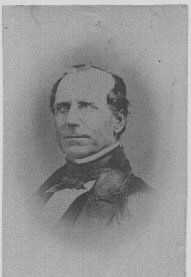
William Heath Davis of San Francisco was author of the autobiography titled Seventy-Five Years in California. Davis visited Williams at Chino in June 1847 to receive payment for goods sold by the former to the latter exactly a year prior and said of him that "Isaac Williams was one of the best types of the early settlers who came from east of the Rocky Mountains to settle here." Williams was physically imposing: "he was a man who stood at least six feet in height, of large frame, muscular and without much flesh [fat?]. He was of commanding appearance, with a pleasant countenance. I do not think he had an enemy in Los Angeles County or in southern California." Isaac "gave as one reason of his coming here (California) that he wanted to see the setting sun in the furthest West."
Horace Bell described him as “the most perfect specimen of frontier gentlemen I ever knew - tall, handsome, elegant, and courtly in his manner. . . With his corps of Mexican assistants and his village of Indian vassals, this adventurous American was more than a baron; he was a prince, and wielded an influence and power more absolute and arbitrary than any of the barons of the middle ages.”
Horace Bell described him as “the most perfect specimen of frontier gentlemen I ever knew - tall, handsome, elegant, and courtly in his manner. . . With his corps of Mexican assistants and his village of Indian vassals, this adventurous American was more than a baron; he was a prince, and wielded an influence and power more absolute and arbitrary than any of the barons of the middle ages.”
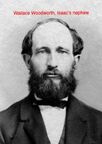
Isaac's Siblings and Relatives from Ohio
Once Isaac left his central Ohio home in 1826 there did not appear to be any contact with family members until he got established at Rancho Chino. In 1853 Isaac's 21 year-old nephew Wallace Woodworth (1832-1882) moved from Van Buren, Iowa to Los Angeles County to become the ranch foreman of his uncle's property. Wallace's parents, John D. and Samantha Williams (Isaac's younger sister) Woodworth migrated from the Midwest to California in the mid 1850's. John was appointed as Postmaster in southern California in 1858. Their son Wallace married into the Lugo family and founded a prominent lumber business with William Perry that lasted until Woodworth’s death in the early 1880s. It was most likely from his experience at Rancho Chino that Woodworth also got involved in the cattle business, making money buying and selling on a large scale.
Once Isaac left his central Ohio home in 1826 there did not appear to be any contact with family members until he got established at Rancho Chino. In 1853 Isaac's 21 year-old nephew Wallace Woodworth (1832-1882) moved from Van Buren, Iowa to Los Angeles County to become the ranch foreman of his uncle's property. Wallace's parents, John D. and Samantha Williams (Isaac's younger sister) Woodworth migrated from the Midwest to California in the mid 1850's. John was appointed as Postmaster in southern California in 1858. Their son Wallace married into the Lugo family and founded a prominent lumber business with William Perry that lasted until Woodworth’s death in the early 1880s. It was most likely from his experience at Rancho Chino that Woodworth also got involved in the cattle business, making money buying and selling on a large scale.
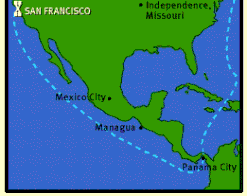
In 1850 Isaac's siblings David and Thaddeus Williams were living in Johnstown, Licking County, Ohio. They wanted to visit their brother in California. They, no doubt, had also caught Gold Rush fever and wanted to check in with Isaac about this contagion that was sweeping the country. The brothers were enroute to California by way of The Panama Shortcut. However, sadly, brother David became sickened with the prevailing fever (possibly malaria, yellow fever or cholera). Soon after David boarded the vessel for California he died at age 55 and was buried in mid-ocean.
Thaddeus continued on to Rancho Chino and was able to visit with his older brother per Isaac's letter below. But, when making the return trip, Thaddeus unfortunately died in Elmira, New York and was buried at the Old Second Street Cemetery. Thaddeus was 47 years old and was survived by wife Francinah (Ashbrook) Williams and his four young children. It is assumed that he was in New York visiting relatives when he died.
Below are images of the letter that Isaac sent to his brother in Johnstown, Ohio. There is also a transcribed Word doc of the letter. However, Thaddeus Williams died before the letter made it to Johnstown, Ohio. (Misspellings and lack of punctuation were included as written.) Isaac actually signed his name three times at the end of the letter. No family record has been found about whether Thaddeus' family received Isaac's remittance of $6,000 mentioned in the letter. It seems to be quite a large sum for that time period.
Thaddeus continued on to Rancho Chino and was able to visit with his older brother per Isaac's letter below. But, when making the return trip, Thaddeus unfortunately died in Elmira, New York and was buried at the Old Second Street Cemetery. Thaddeus was 47 years old and was survived by wife Francinah (Ashbrook) Williams and his four young children. It is assumed that he was in New York visiting relatives when he died.
Below are images of the letter that Isaac sent to his brother in Johnstown, Ohio. There is also a transcribed Word doc of the letter. However, Thaddeus Williams died before the letter made it to Johnstown, Ohio. (Misspellings and lack of punctuation were included as written.) Isaac actually signed his name three times at the end of the letter. No family record has been found about whether Thaddeus' family received Isaac's remittance of $6,000 mentioned in the letter. It seems to be quite a large sum for that time period.
|
Transcribed Letter from Isaac Williams to his brother Thaddeus (no corrections were added)
|
It is possible that Isaac's younger brother Hiram Williams moved from Ohio to the San Bernardino area. More research is needed to confirm this possibility. However, the 1880 census for San Timoteo, San Bernardino, California does show Hiram Williams, age 68, a widower and living with the Filisano Lopez family. It reports Hiram as born in Ohio and his parents both born in Pennsylvania.
|
Death of Isaac Williams
Isaac died on September 13, 1856 at Rancho Santa Ana del Chino. He was a few days short of his 57th birthday. Williams' ranch was famed far and wide for its spaciousness and hospitality. Williams was liberal in assisting the needy, even dispatching messengers to Los Angeles to secure clothing and other supplies for the ragged immigrants and weary gold rush visitors; and it is related that, on other occasions, he was known to have advanced to young men capital amounting in the aggregate to thousands of dollars, with which they established themselves in business. Williams would send help to travelers on the desert road who were starving or had lost their animals, giving the travelers or their rescue parties food and sometimes horses or mules, or sent his own men out into the desert to do so. Located on the Southern Emigrant Trail, the adobe became a stop and later an inn famous for its hospitality to parties of Forty-niners and later travelers. Isaac left the majority of his estate to his oldest two daughters, Francisca and Merced. The daughters had been pampered by their indulgent father, and they knew little about business matters or how to run a ranch. So when their father died in 1856, the teenage daughters both married soon after their father’s death to the first eligible suitor who came along. Rancho Santa Ana del Chino passed through various hands after Williams’ death until it was finally purchased by an English syndicate and broken into small tracts. |
|
NOTE:
This webpage that chronicles the life of Isaac Williams was created by the Johnstown Historical Society's webmaster. She is a direct descendent to the Williams family and felt it was important to share Isaac's story of his time living in Johnstown between 1810 and 1826. That part of his story was always missing from all the publicity his life received in the California history books. The Johnstown Historical Society is located in Johnstown, Monroe Township, Licking County, Ohio. It is a nonprofit, 501(c) (3) organization committed to researching the history of Johnstown, and collecting, preserving, and exhibiting objects and documents from the past. |
|
NOTE:
Credits go to Paul Spitzzeri and his Carbon Canyon Chronicle blog for the many Isaac Williams' resources that are posted by him. Paul's blog has been most helpful in discovering much about Isaac Williams and his life in California. Paul also serves as the director of the Workman & Temple Family Homestead Museum in California. Also a special thanks to Linda Bridger for the information she provides on Ancestry.com about Isaac and his California life. |
